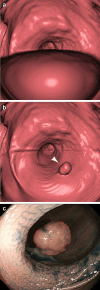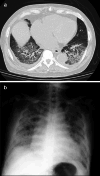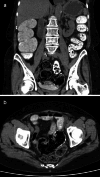The potential of CT colonography for colorectal cancer screening in Japan
- PMID: 40347404
- PMCID: PMC12397183
- DOI: 10.1007/s11604-025-01798-2
The potential of CT colonography for colorectal cancer screening in Japan
Abstract
Colorectal cancer remains a leading cause of mortality worldwide, and early detection is essential for improving outcomes. CT colonography (CTC) has emerged as a promising alternative to optical colonoscopy for colorectal cancer screening. This article explores the potential of CTC in Japan, focusing on quality control, patient acceptability, complications, and its role in screening programs. CTC has demonstrated high sensitivity and specificity for detecting colorectal polyps, with its diagnostic performance comparable to colonoscopy for lesions ≥ 10 mm. Techniques such as fecal tagging and dual-position imaging significantly enhance diagnostic accuracy. However, the variability in diagnostic outcomes underscores the need for rigorous interpretation training and quality control. The American College of Radiology recommends training with at least 50 cases verified by colonoscopy. Despite its advantages, the adoption of CTC in Japan remains limited due to low awareness among medical professionals, a shortage of trained radiologists, and the absence of specific guidelines endorsing its use. Patient acceptability for CTC is high due to its non-invasive nature, shorter examination time, and reduced bowel preparation requirements compared to colonoscopy. Nonetheless, complications such as bowel perforation, albeit rare, necessitate careful risk assessment. While CTC has been recognized in the U.S. and Europe for screening and diagnostic follow-up, its integration into Japan's colorectal cancer screening guidelines is crucial to expand its utilization. To maximize the benefits of CTC, efforts must focus on standardizing methodologies, establishing quality indicators, and generating robust evidence on mortality reduction and cost-effectiveness.
Keywords: CT colonography; Colorectal neoplasms; Mass screening; Quality control.
© 2025. The Author(s).
Conflict of interest statement
Declarations. Conflict of Interest: The authors declare that they have no conflict of interest. Ethical approval: All procedures performed in this article were in accordance with the ethical standards of the institutional and with the Helsinki declaration.
Figures





Similar articles
-
[Imaging of colorectal cancer: Role of computed tomography colonography].Radiologie (Heidelb). 2025 Jun;65(6):416-425. doi: 10.1007/s00117-025-01456-8. Epub 2025 May 20. Radiologie (Heidelb). 2025. PMID: 40392342 Free PMC article. Review. German.
-
Prescription of Controlled Substances: Benefits and Risks.2025 Jul 6. In: StatPearls [Internet]. Treasure Island (FL): StatPearls Publishing; 2025 Jan–. 2025 Jul 6. In: StatPearls [Internet]. Treasure Island (FL): StatPearls Publishing; 2025 Jan–. PMID: 30726003 Free Books & Documents.
-
What is the value of computered tomography colonography in patients screening positive for fecal occult blood? A systematic review and economic evaluation.Clin Gastroenterol Hepatol. 2007 Dec;5(12):1439-46; quiz 1368. doi: 10.1016/j.cgh.2007.09.003. Clin Gastroenterol Hepatol. 2007. PMID: 18054752
-
An international review of the main cost-effectiveness drivers of virtual colonography versus conventional colonoscopy for colorectal cancer screening: is the tide changing due to adherence?Eur J Radiol. 2013 Nov;82(11):e629-36. doi: 10.1016/j.ejrad.2013.07.019. Epub 2013 Aug 12. Eur J Radiol. 2013. PMID: 23938237
-
Sensitivity and specificity of CT colonography for the detection of colonic neoplasia after positive faecal occult blood testing: systematic review and meta-analysis.Eur Radiol. 2014 May;24(5):1049-58. doi: 10.1007/s00330-014-3106-0. Epub 2014 Feb 12. Eur Radiol. 2014. PMID: 24519111
References
-
- Pickhardt PJ, Choi JR, Hwang I, et al. Computed tomographic virtual colonoscopy to screen for colorectal neoplasia in asymptomatic adults. N Engl J Med. 2003;349:2191–200. - PubMed
-
- Cotton PB, Durkalski VL, Pineau BC, et al. Computed tomographic colonography (virtual colonoscopy): a multicenter comparison with standard colonoscopy for detection of colorectal neoplasia. JAMA. 2004;291:1713–9. - PubMed
-
- Rockey DC, Paulson E, Niedzwiecki D, et al. Analysis of air contrast barium enema, computed tomographic colonography, and colonoscopy: prospective comparison. Lancet. 2005;365:305–11. - PubMed
-
- Zalis ME, Blake MA, Cai W, et al. Diagnostic accuracy of laxative-free computed tomographic colonography for detection of adenomatous polyps in asymptomatic adults: a prospective evaluation. Ann Intern Med. 2012;156:692–702. - PubMed
Publication types
MeSH terms
LinkOut - more resources
Full Text Sources
Medical

